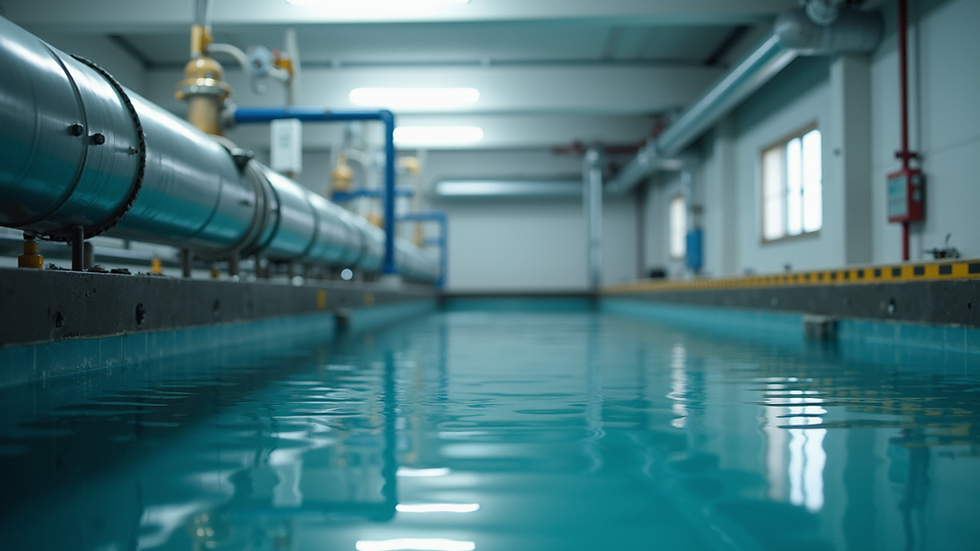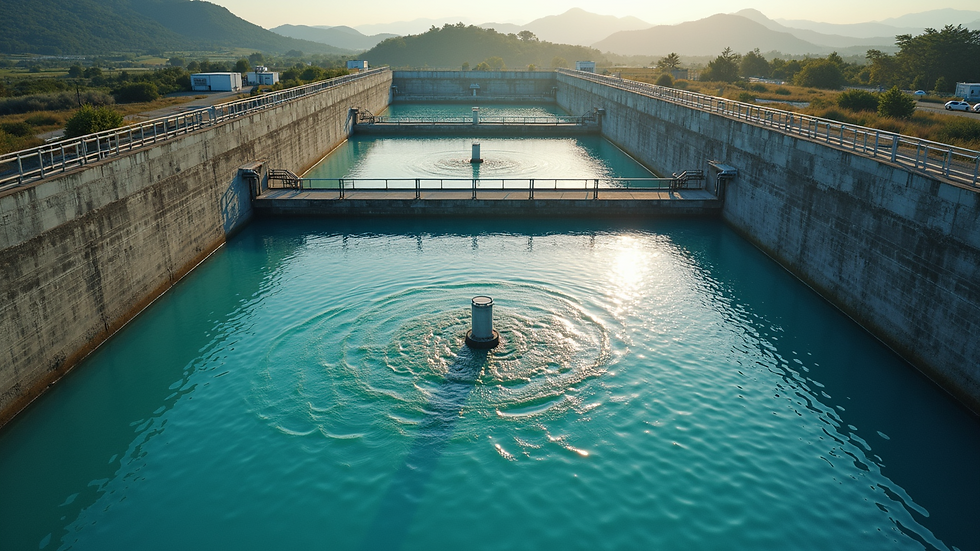Master Advanced Sewage Treatment Techniques
- palwinder kaur
- Aug 12
- 4 min read
Sewage treatment is a critical component of urban infrastructure, ensuring that wastewater is safely processed before being released back into the environment. As populations grow and environmental regulations tighten, traditional sewage treatment methods are no longer sufficient. This has led to the rise of modern sewage solutions that incorporate innovative technologies and processes. These solutions not only improve the quality of treated water but also enhance sustainability and resource recovery.
In this comprehensive guide, we will explore the latest advancements in sewage treatment, focusing on practical techniques and technologies that can be implemented to achieve superior results. Whether you are a professional in the water treatment industry or simply interested in environmental technologies, this article will provide valuable insights into mastering modern sewage solutions.
Understanding Modern Sewage Solutions: Innovations and Benefits
Modern sewage solutions represent a shift from conventional treatment methods to more efficient, eco-friendly, and cost-effective approaches. These solutions integrate biological, chemical, and physical processes to remove contaminants more thoroughly and recover valuable resources.
Key Innovations in Modern Sewage Solutions
Membrane Bioreactors (MBRs): Combining membrane filtration with biological treatment, MBRs offer high-quality effluent with reduced footprint.
Advanced Oxidation Processes (AOPs): These use powerful oxidants to break down complex organic pollutants that are resistant to conventional treatment.
Nutrient Recovery Systems: Technologies that extract nitrogen and phosphorus from wastewater for reuse as fertilizers.
Anaerobic Digestion Enhancements: Improved biogas production from sludge, turning waste into energy.
Benefits of Implementing Modern Sewage Solutions
Improved Water Quality: Enhanced removal of pathogens, nutrients, and micropollutants.
Environmental Protection: Reduced discharge of harmful substances into water bodies.
Resource Efficiency: Recovery of energy and nutrients reduces operational costs.
Compliance: Meets stringent environmental regulations and standards.

Exploring Modern Sewage Solutions: Practical Applications and Technologies
Implementing modern sewage solutions requires understanding the specific technologies and how they can be applied in different contexts. Here are some practical examples and recommendations:
Membrane Bioreactors (MBRs)
MBRs combine activated sludge treatment with membrane filtration. This technology allows for:
Compact Design: Smaller footprint compared to traditional plants.
High-Quality Effluent: Suitable for reuse in irrigation or industrial processes.
Operational Flexibility: Can handle variable loads and influent quality.
Example: A municipal plant upgraded to MBR technology reduced its effluent turbidity to less than 1 NTU, enabling water reuse for landscaping.
Advanced Oxidation Processes (AOPs)
AOPs use hydroxyl radicals to degrade persistent organic pollutants. Common methods include ozone, UV light, and hydrogen peroxide.
Use Case: Treatment of pharmaceutical residues and endocrine disruptors.
Recommendation: Integrate AOPs as a polishing step after biological treatment.
Nutrient Recovery
Recovering nutrients from wastewater helps prevent eutrophication in water bodies and provides raw materials for fertilizers.
Techniques: Struvite precipitation, ammonia stripping.
Benefit: Converts waste into valuable products, reducing disposal costs.
Anaerobic Digestion Enhancements
Optimizing anaerobic digestion increases biogas yield and stabilizes sludge.
Techniques: Thermal hydrolysis, co-digestion with organic waste.
Outcome: Renewable energy generation and reduced sludge volume.

What is advanced treatment of wastewater?
Advanced treatment of wastewater refers to processes that go beyond primary and secondary treatment to remove contaminants that are not effectively eliminated by conventional methods. This stage is crucial for achieving high-quality effluent suitable for sensitive environments or reuse.
Components of Advanced Treatment
Tertiary Filtration: Removes suspended solids and fine particles.
Disinfection: Uses chlorine, UV, or ozone to kill pathogens.
Chemical Treatment: Removes specific pollutants like heavy metals.
Biological Nutrient Removal: Targets nitrogen and phosphorus reduction.
Importance of Advanced Treatment
Protects Ecosystems: Prevents nutrient overload and contamination.
Supports Water Reuse: Enables safe use of treated water in agriculture and industry.
Meets Regulatory Standards: Complies with stricter discharge limits.
Example Application
A coastal city implemented advanced treatment to protect its marine life. The process included tertiary filtration and UV disinfection, resulting in a 90% reduction in pathogen levels.

Integrating advanced sewage treatment into Existing Infrastructure
Upgrading existing sewage treatment plants with advanced technologies can be challenging but rewarding. Here are steps and tips for successful integration:
Assessment and Planning
Evaluate Current Performance: Identify gaps in treatment efficiency.
Set Goals: Define desired effluent quality and resource recovery targets.
Feasibility Study: Analyze technical and financial aspects.
Technology Selection
Choose technologies compatible with existing systems.
Consider modular solutions for phased implementation.
Implementation Strategies
Pilot Testing: Trial new processes on a small scale.
Staff Training: Ensure operators understand new technologies.
Monitoring and Optimization: Use sensors and automation for real-time control.
Case Study
A mid-sized city retrofitted its plant with MBR and nutrient recovery units. The upgrade reduced effluent nitrogen by 80% and generated fertilizer products, creating a new revenue stream.
Future Trends in Sewage Treatment: Sustainability and Smart Technologies
The future of sewage treatment lies in sustainability and digital innovation. Emerging trends include:
Circular Economy Approaches
Resource Recovery: Maximizing energy, water, and nutrient reuse.
Zero Liquid Discharge: Minimizing wastewater discharge through recycling.
Smart Monitoring and Automation
IoT Sensors: Real-time data on water quality and equipment status.
AI and Machine Learning: Predictive maintenance and process optimization.
Decentralized Treatment Systems
Small-scale, localized treatment units reduce the burden on central plants.
Suitable for rural or rapidly growing urban areas.
Green Infrastructure
Use of constructed wetlands and biofilters to complement mechanical treatment.
Enhances biodiversity and aesthetic value.
Taking the Next Step in Sewage Treatment Mastery
Mastering modern sewage solutions requires continuous learning and adaptation. By embracing innovative technologies and sustainable practices, wastewater treatment can become more efficient, environmentally friendly, and economically viable.
Actionable Recommendations:
Stay Informed: Follow industry blogs and research on advanced sewage treatment.
Invest in Training: Equip your team with knowledge of new technologies.
Pilot Innovations: Test new methods before full-scale adoption.
Engage Stakeholders: Collaborate with regulators, communities, and technology providers.
Focus on Sustainability: Prioritize resource recovery and environmental protection.
By implementing these strategies, you can lead the way in modern sewage solutions and contribute to a cleaner, healthier future.



Comments